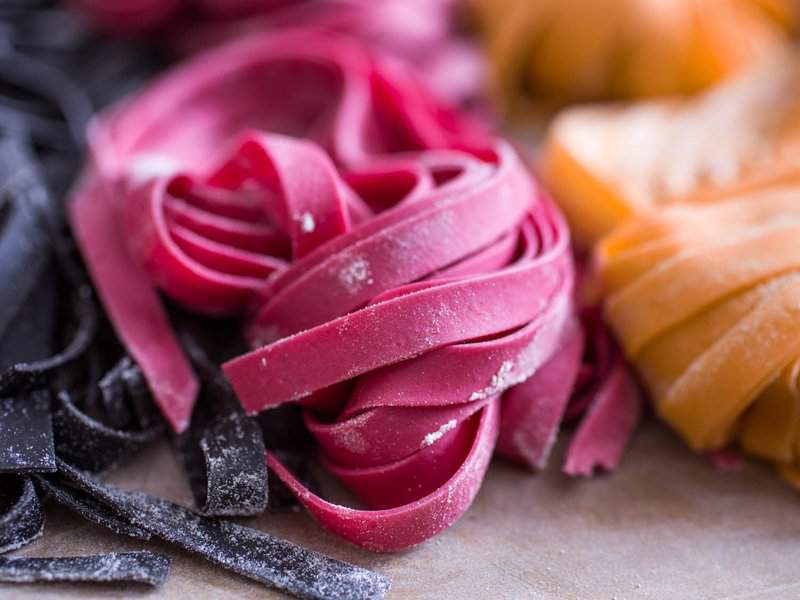
[Photograph: Vicky Wasik, Shao Z.]
Let’s make one thing clear right out of the gate: Cooking as a couple isn’t for everyone. (Two years ago, we published a whole essay about this, albeit with a happy ending.) Maybe neither of you has Daniel’s sky-high standards in the kitchen, but successfully assembling a dinner together is one of those projects that tend to pull the veil off a relationship, exposing the tender spots of tension therein: needs for control or approval, tiny currents of judginess or thin competitive streaks. Even absent the complexity introduced by romance, deeply intertwined lives, and intimate knowledge of each other’s foibles, suddenly teaming up on a task that you’re used to doing alone can be a tough row to hoe—think of workplace collaboration, or The Amazing Race. You’ve been warned, is what we’re saying.
But! You’ve clicked on this article, you’ve read this far, and you’re a grown-up (we hope) who (we’ll assume) can point to the strength of your relationship and/or past triumphant team-cooking experiences as ample counterevidence. You already know that making a meal together can be a lovely expression of love, a way to create Valentine’s in your and your partner’s own image, on your own schedule, and avoid the headaches of dining out on that particular day. You’re here for recipes, not marriage advice, for chrissake! Well, fine.
While you can split up the duties required of almost any dish, some projects make more sense for this purpose than others. At the top of the list are any recipes that involve a lot of painstaking assembly, including items made in bulk to be frozen (dumplings and ravioli!) or stored in the pantry (DIY Milk Duds!) for later. Some of these recipes won’t make entrées, much less full meals, but we’ve included them because they provide good opportunities for collaboration, and because cooking projects can be enjoyable and worthwhile even if they don’t directly result in dinner. Pour a couple of glasses of wine and peruse this list together now, then stock up on everything you need well in advance, so you can be as relaxed as possible on the day of.
Homemade Mozzarella
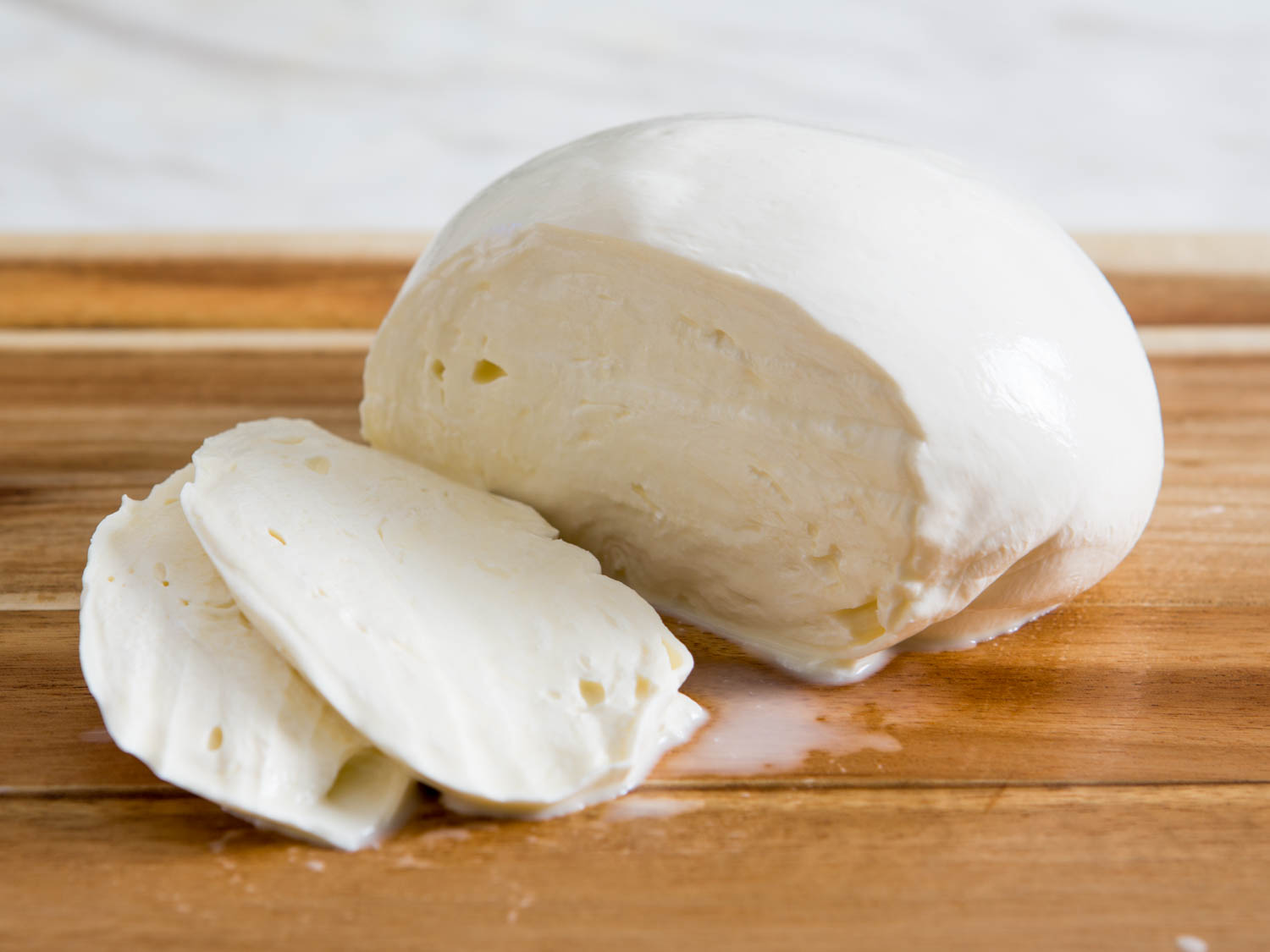
[Photograph: Vicky Wasik]
High-quality fresh mozzarella—those delicate, moist orbs with a mild flavor of little more than good milk—can be hard to come by if you don’t live in Italy, or, at least, within close range of a well-supplied Italian grocery. Are you and your innamorato destined to go without? Not if we have anything to say about it. Armed with nonhomogenized, low-temperature-pasteurized milk (best obtained from a local farmers market), a couple of specialty ingredients you can order online, and a thorough reading of our explanation, you can take matters into your own hands, kind of literally. The teaming-up part comes when it’s time to stretch and shape the curd: After it’s been divided, both of you can stretch and lovingly shape your own balls of mozz before lowering them into whey to rest. For maximum collaboration, shape the cheese into tiny bocconcini instead of full-size balls, the better to pop into each other’s mouths right after they’re made. No, really: Eat these immediately, totally naked (the cheese, we mean, but y’all do y’all!), or with just a sprinkling of sea salt. Don’t even think about putting them in the fridge for later—true love might wait, but fresh mozzarella does not.
Get the recipe for Fresh Mozzarella From Scratch »
Pasta, All Ways
The Best Fresh Pasta Sheets
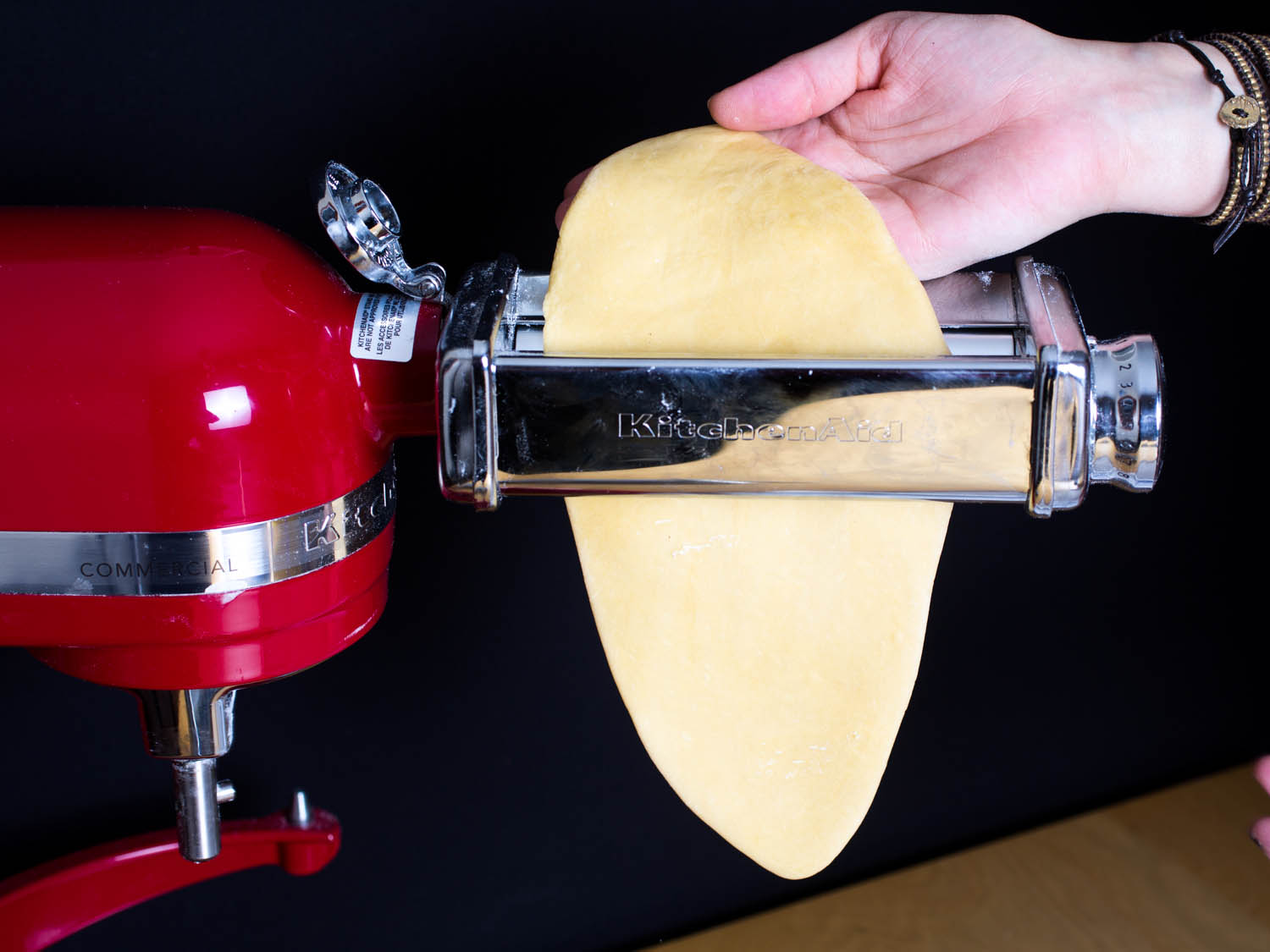
[Photograph: Vicky Wasik]
Like making your own mozzarella, rolling and cutting your own fresh pasta dough will give you more than a terrific feeling of personal accomplishment; it’ll also result in a far tastier product than you’ll be able to buy at the vast majority of stores. One person can handle making the dough, sure, but kneading it is time-consuming, so it’s a good candidate for dividing between partners. If you’re using a manual pasta roller, it also helps to have one person feeding the dough in while the other turns the crank. If you’re lucky enough to have a stand mixer attachment for making pasta, well, take turns standing there and looking pretty. (Speaking of looking pretty: Incorporating beet purée is an easy way to turn your pasta a vibrant shade of pink that’s made for Valentine’s Day, without imparting any noticeable beet flavor.)
Get the recipe for Classic Fresh Egg Pasta »
This recipe makes pasta sheets that are ideal for slicing into linguine or fettuccine. Looking for something more involved? May we suggest…
Ravioli and Tortellini
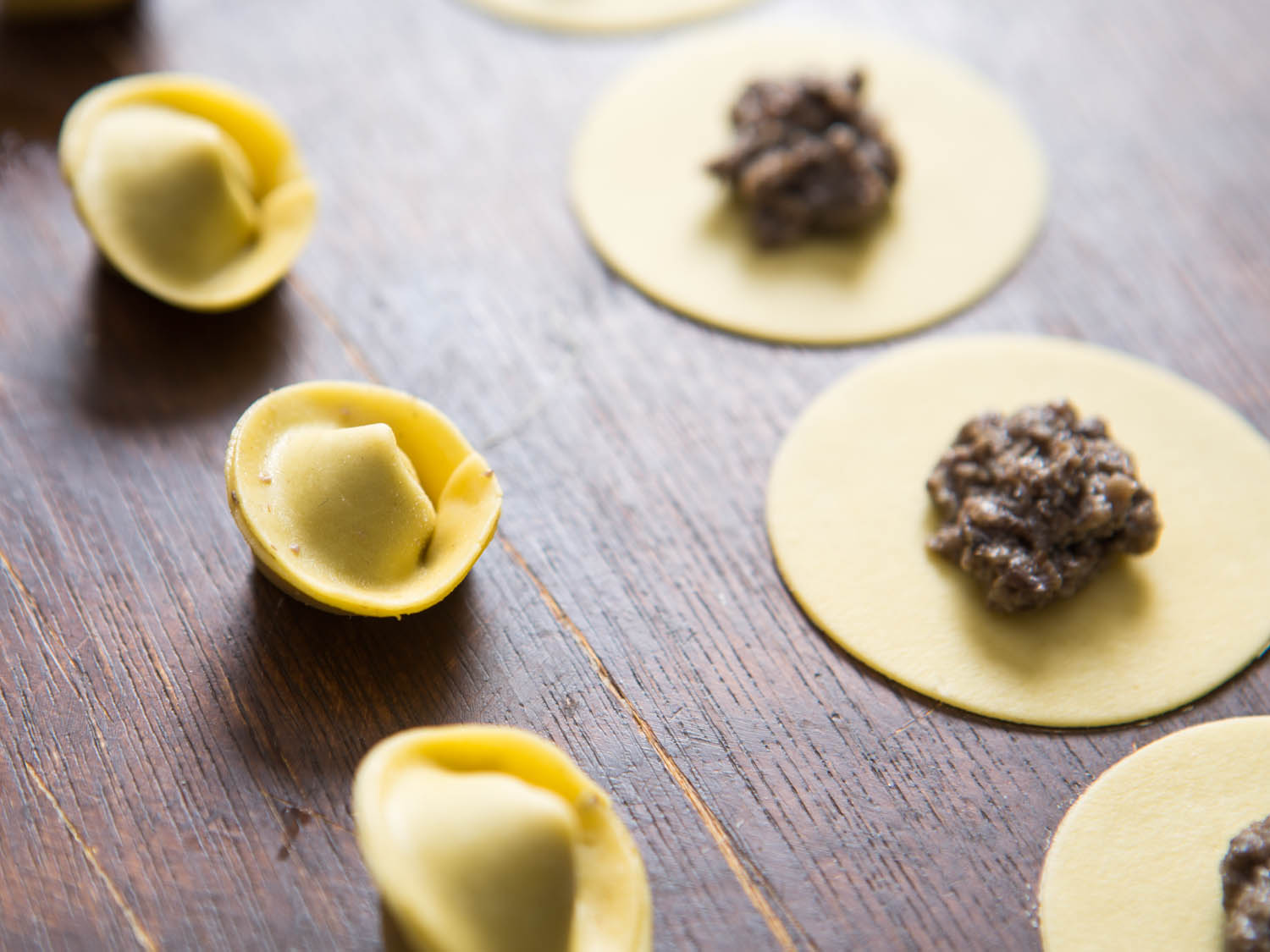
[Photograph: Vicky Wasik]
If you and your valentine still have energy to burn after rolling out that homemade pasta dough, there’s nothing stopping you from turning it into an impressive spread of mushroom tortellini, ravioli filled with ricotta or butternut squash and blue cheese, or—for the high achievers among you, the couples who go running together in matching compression tights, you know who you are—an eye-popping dish of uovo in raviolo, extra-large ravioli filled with creamy ricotta and a soft-yolked egg. You will probably need a ravioli mold, or at least a fluted pastry wheel, when it’s time to cut the dough shapes, and you’ll definitely want both sets of hands available for portioning out the filling. If you’re making standard ravioli or tortellini, by all means enjoy your work for dinner in the evening, but make enough to freeze and eat later, too.
Stuffed Shells
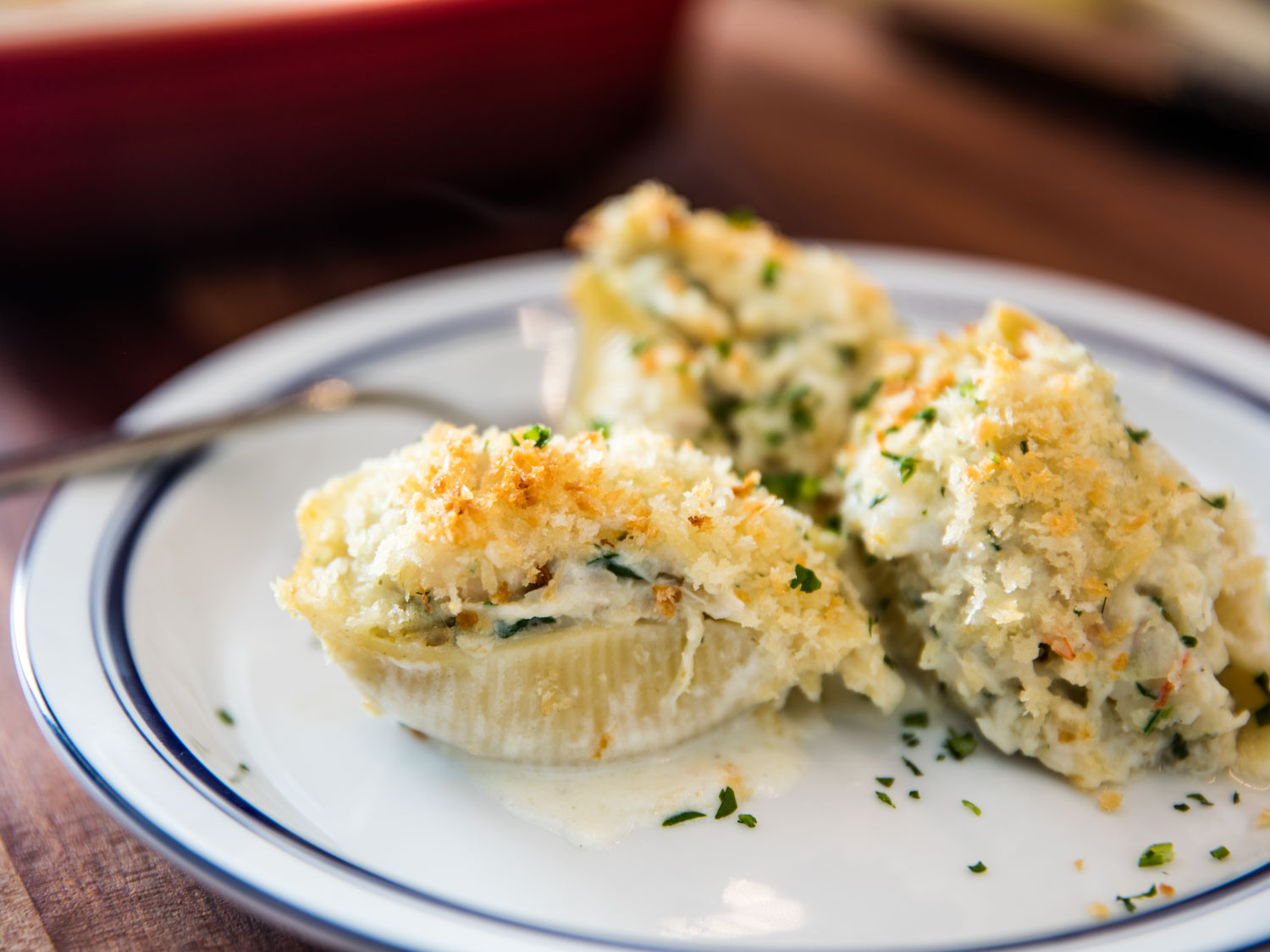
[Photograph: Vicky Wasik]
Want something a little softer and easier? A filled pasta that’s not quite as handcrafted, but still delicious, one that’ll leave you plenty of time for drinking wine and playing video games? Try our classic ricotta- and spinach-stuffed shells, or this incredible version with shells filled with crab, shrimp, and scallops, a bit like the love child of crab cakes and pasta Alfredo. Both of them start with store-bought dried pasta, but will still go a lot faster when you’ve got two people to do the stuffing.
Ricotta Gnudi
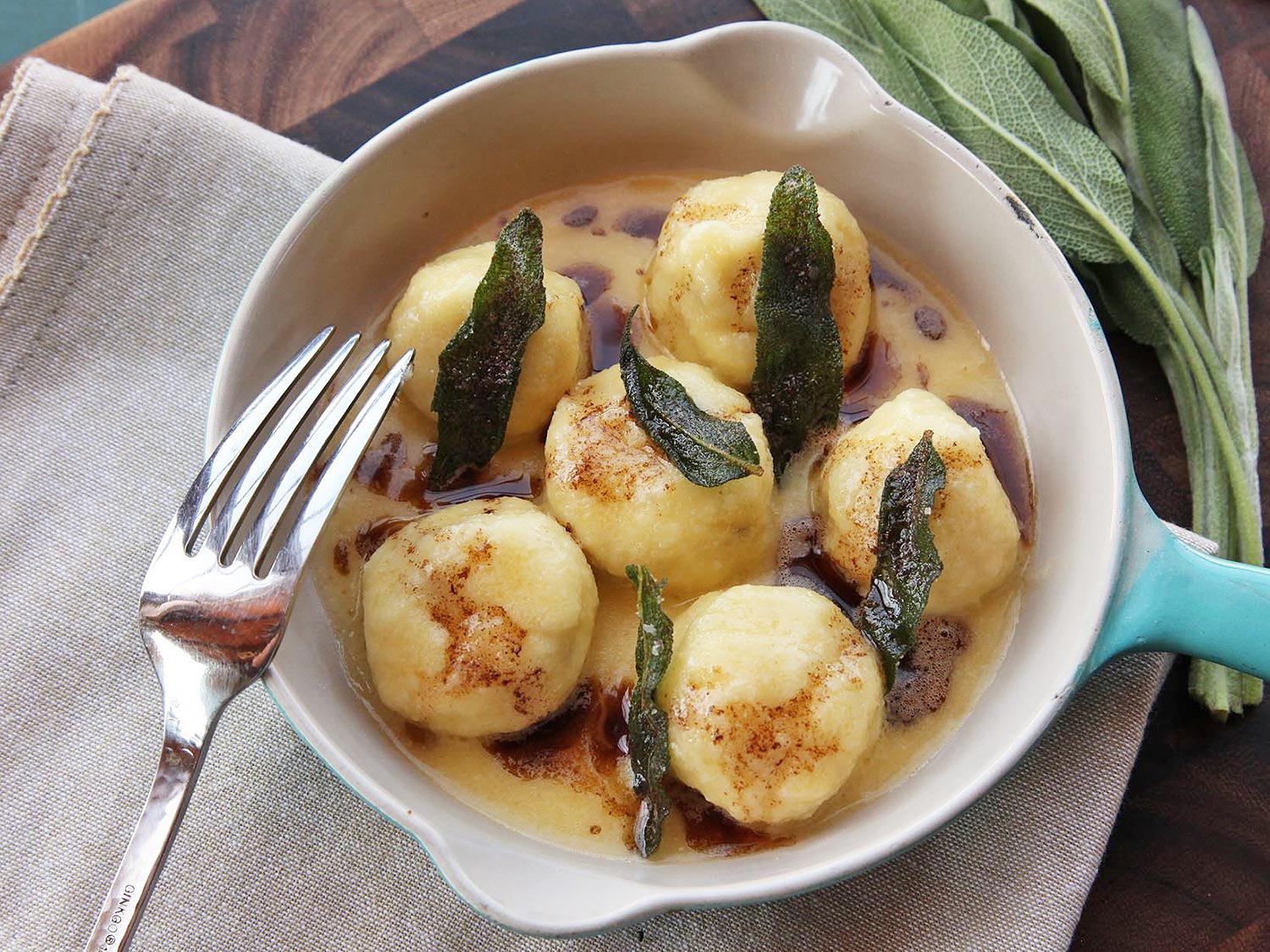
[Photograph: J. Kenji López-Alt]
Gnudi comes from the old Tuscan-language equivalent of the word for “naked” in Italian, a name that’s both thematically appropriate for Valentine’s and practically descriptive of the dish: dumpling-like spheres of soft and creamy ricotta that lack a true pasta shell. Instead, they’re individually coated in a layer of semolina flour—a step that’s made quicker and easier with a partner—then allowed to sit until the thinnest of skins form on their exteriors. You’ll need to plan ahead for that step, as it can take a few days, and, above all, don’t skimp on the quality of the ricotta! With barely a fig leaf of pasta to cover it, so to speak, the cheese is highly exposed, which means it needs to be in top form. If excellent ricotta, containing no gums or stabilizers, isn’t available commercially where you live, tack on a bonus cooking project by making your own—it’s much easier than you think.
Get the recipe for Ricotta and Black Pepper Gnudi With Sage and Brown Butter »
A Dumpling Feast
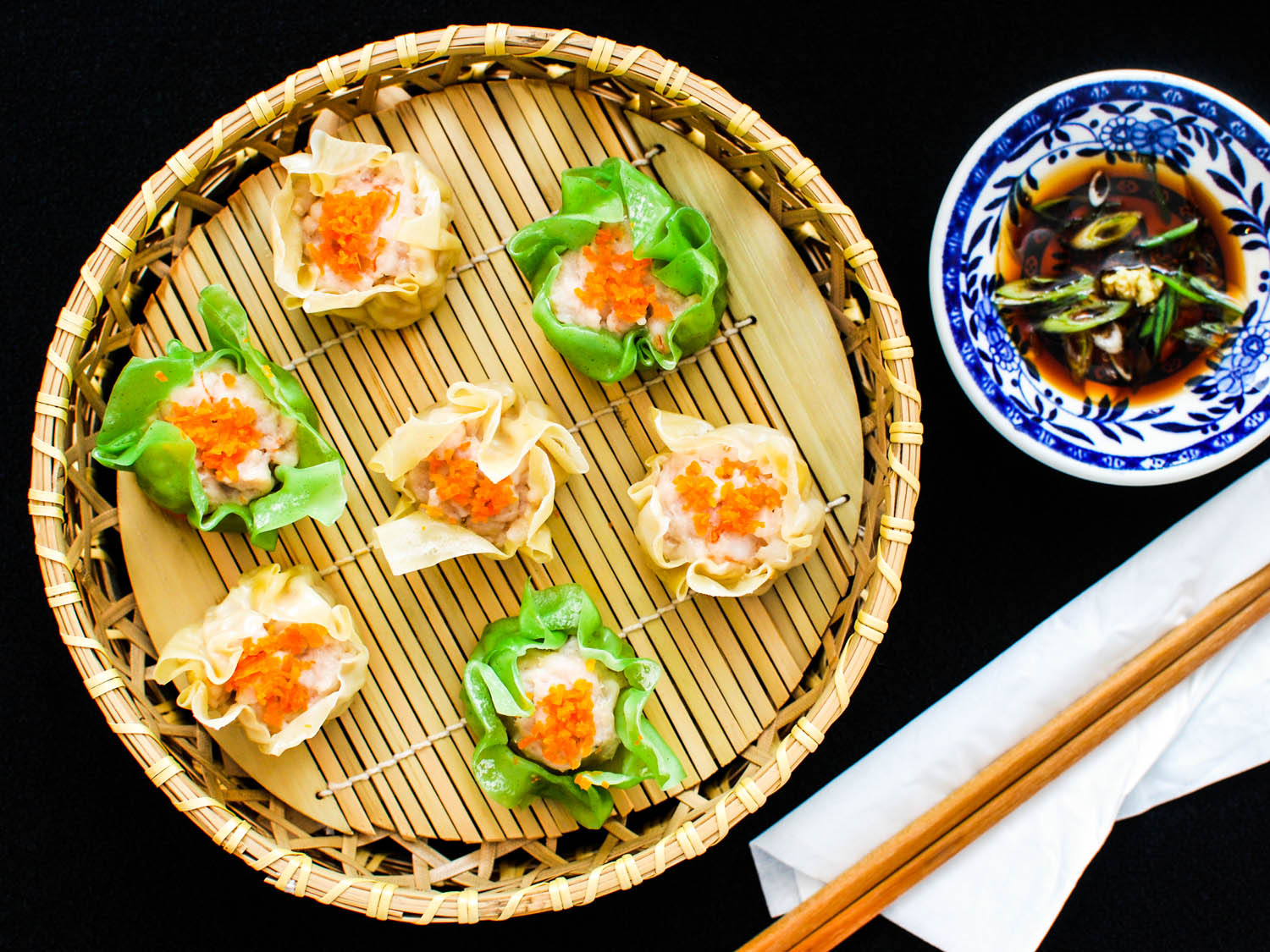
[Photograph: Shao Z.]
With the help of store-bought wonton wrappers, making your own dumpling feast becomes as simple as whipping up the filling and starting up a two-person assembly line: one person to drop filling by the spoonful into each dumpling skin, the other to wet the edges, press, and seal. (For the sake of conjugal harmony, be sure to switch roles now and then, since partner #2 does the lion’s share of the work here.) We’ve got a number of recipes that start with store-bought wrappers, for dumplings as invitingly easy as they are tasty: pan-fried vegetable dumplings stuffed with wood ear mushrooms, five-spice tofu, and seitan; cute little shrimp and pork siu mai, made extra rich with pork fat mixed into the filling; Japanese pork and cabbage gyoza; and Sichuan-style wontons that pack a punch with hot, sour, sweet, and savory flavors. (Don’t forget the dipping sauces, too!)
Not enough of a challenge for you, unstoppable power couple that you are? Try your hands at dumplings that are homemade from start to finish, including the wrappers—like diaphanous har gow crammed with plump shrimp, or hearty Taiwanese pan-fried leek buns (shui jian bao). Perhaps the crowning achievement in a homemade-dumpling résumé, if there is such a thing, is xiao long bao, or soup dumplings, twist-topped bundles of dough hiding a liquid center of broth that gushes when you bite into it. Though they’re not all that difficult to make, they do rely on the gelatin content of homemade broth, so get ready for some extra canoodling over a mound of chicken backs.
You can find even more homemade-dumpling recipes to try out, either solo or together, here.
Tamales
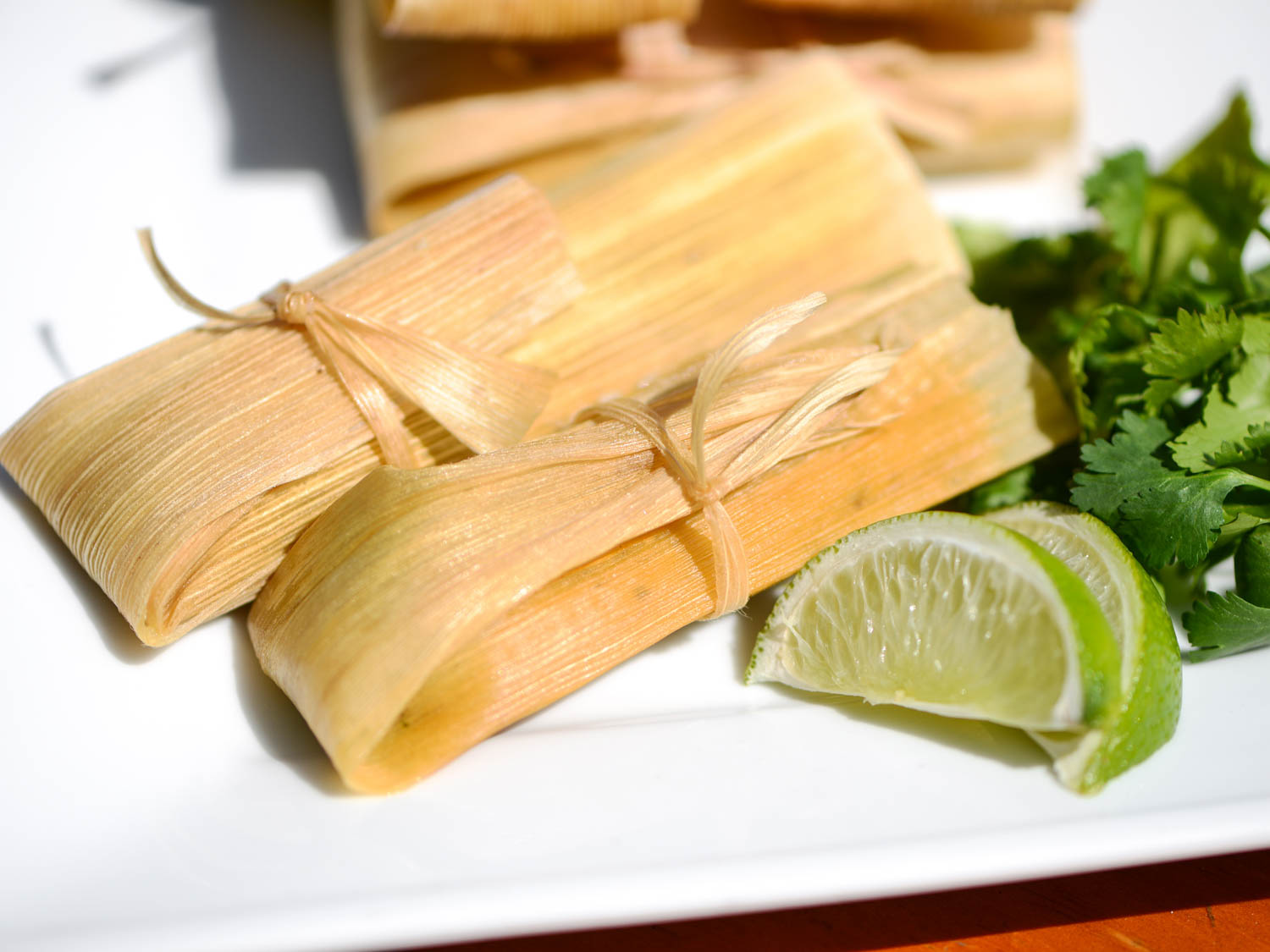
[Photograph: Joshua Bousel]
Yes, tamales have a reputation, and a pretty well-deserved one at that, for being terribly labor-intensive. But dammit, is it ever hard to come by a truly good tamale—light, flavorful masa dough wrapped around a savory core of fillings—in the US, unless you live in one of a very few places with strong Mexican-American influences…or unless you have a special someone to help you make them at home. Our guide smooths the way for you by describing the testing process in detail and including photographs of each step in the assembly process. With help from his wife, Josh was able to put together 60 tamales in under half an hour—not a bad turnaround time—before steaming them or freezing for later. Choose a filling of red chili with chicken, roasted peppers and Oaxaca cheese, or green chili with pork.
Sushi
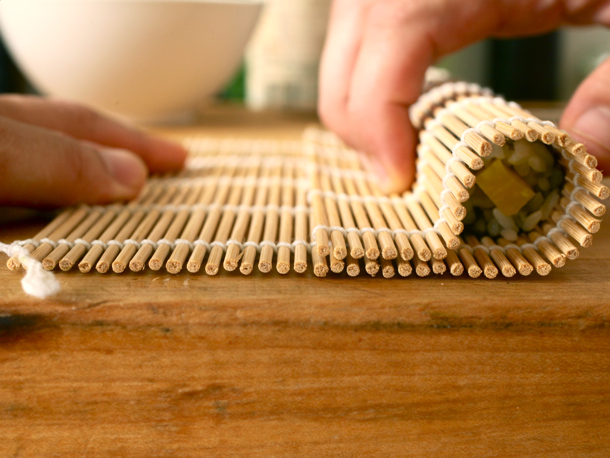
[Photograph: J. Kenji López-Alt]
Making makizushi (sushi rolls) is one of the most enjoyable yet approachable hands-on cooking projects you can dream up. It’s less humdrum than filling dumplings or assembling tamales, and, while it does take a bit of practice and maybe just a smidge of artistry, don’t be intimidated! Equipped with a couple of bamboo rolling mats for turning out tight, even rolls—and as long as you remember to keep your hands moistened and avoid laying the rice and fillings on too thick—you’ll be proudly snapping selfies with your very own maki rolls in short order. Look for fresh, soft, deep-green nori sheets, and, of course, use only the freshest raw fish you can find.
Get the recipe for Makizushi (Sushi Rolls) »
See all of our Sushi Week posts »
Spring Rolls

[Photograph: J. Kenji López-Alt]
Though many American eaters associate the name with the crispy, golden-fried sticks from Thai takeout menus, “spring rolls” is a catchall term that encompasses a wide range of filled-and-rolled appetizers, including the lighter, greener version pictured above. At any other time of year, they’re great for entertaining: Set out a platter of filling options—this recipe calls for fried tofu matchsticks, pea shoots, julienned carrots, and piles of fresh herbs—and a stack of flexible rice paper wrappers, and let everyone make their own. For Valentine’s, limit the guest list to just the two of you, stuff yourselves silly, and don’t skimp on the sweet/salty/spicy peanut-tamarind dipping sauce.
Get the recipe for Easy Vegan Crispy Tofu Spring Rolls »
Desserts
Sandwich Cookies
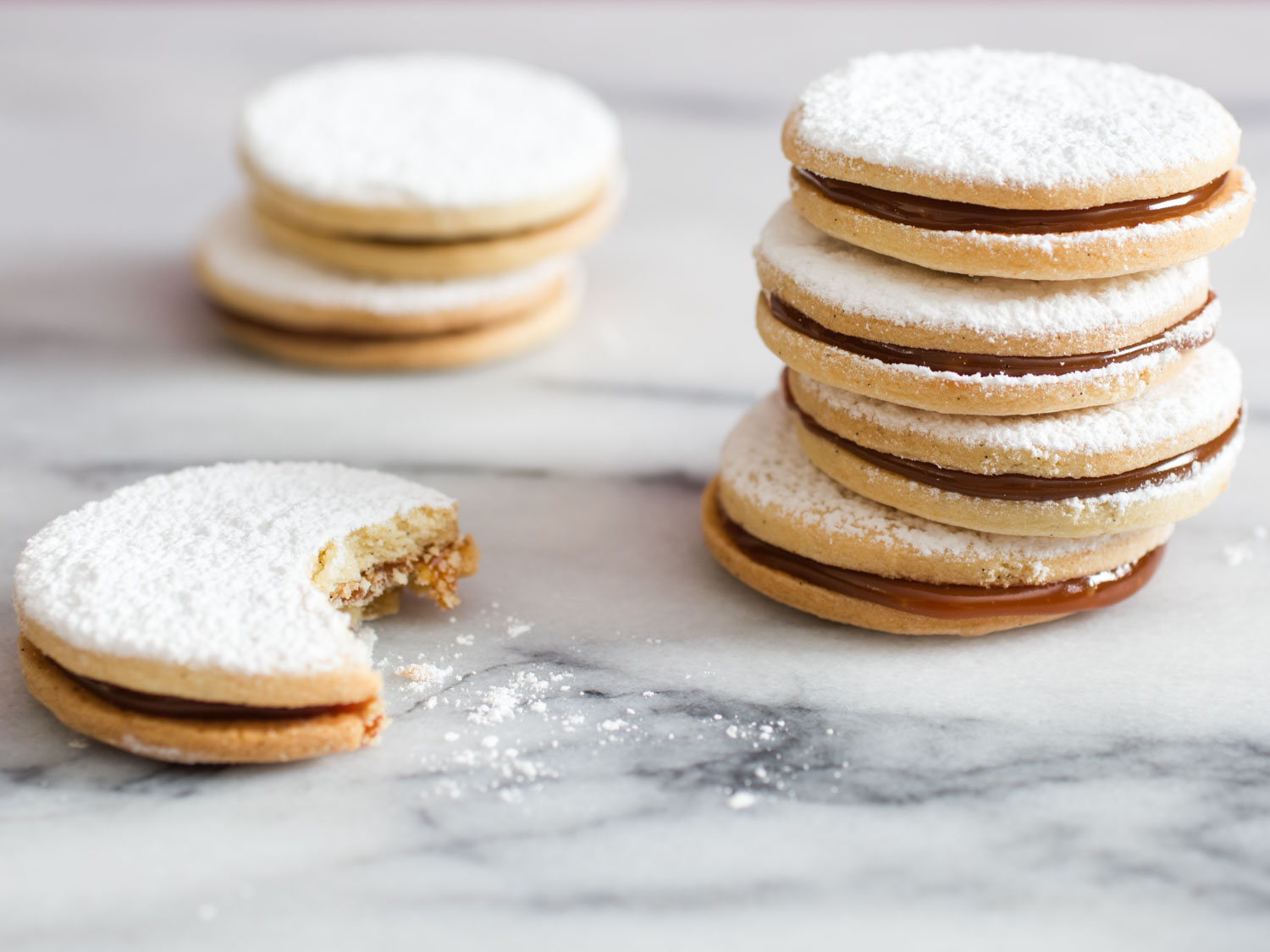
[Photograph: Vicky Wasik]
Any homemade cookie from one of Stella’s recipes should be enough to get you in the mood (or maybe that’s just me I’m thinking of), but sandwich-style cookies will give you an extra chance to lightly touch elbows as you apply dollops of creme and carefully center those top wafers. Choose from BraveTart’s incredible “fauxreos”, bright and crunchy ginger-lemon cookies, E.L. Fudge–style chocolate-filled vanilla cookies, peanut butter and jelly cookies for the kid in you, and soft and tender alfajores con cajeta, to name a few. Springing for a heart-shaped cutter will of course automatically increase your cuteness quotient by 10%.
Milk Duds

[Photograph: Vicky Wasik]
There’s something about a slightly messy DIY project, especially if the mess it produces is edible, that can’t help but feel a little sensual. You’ve got to check your inhibitions at the door if you want to plunge your hands into a vat of melted chocolate, and that’s exactly how you’ll be coating these chewy caramels—which happily introduces the possibility of secretly touching fingers inside the pot and devising clever methods of getting all that chocolate off of each other. You don’t need us for that, but you will want to closely follow Stella’s instructions for making the caramel, and read up on Kenji’s guide to tempering chocolate.

